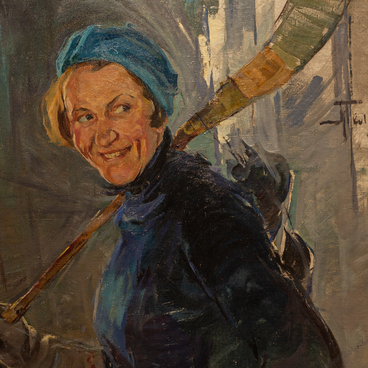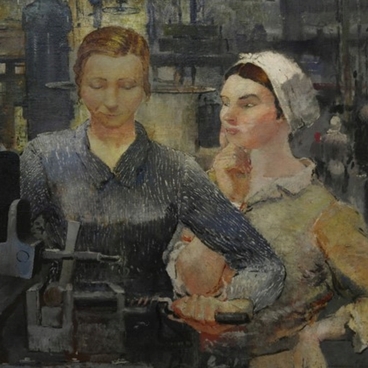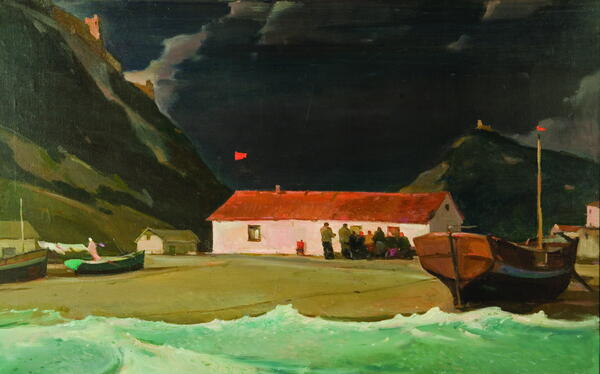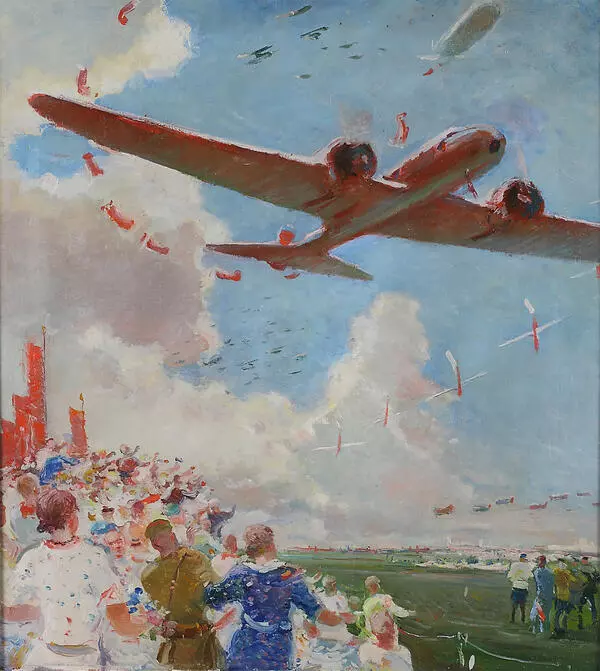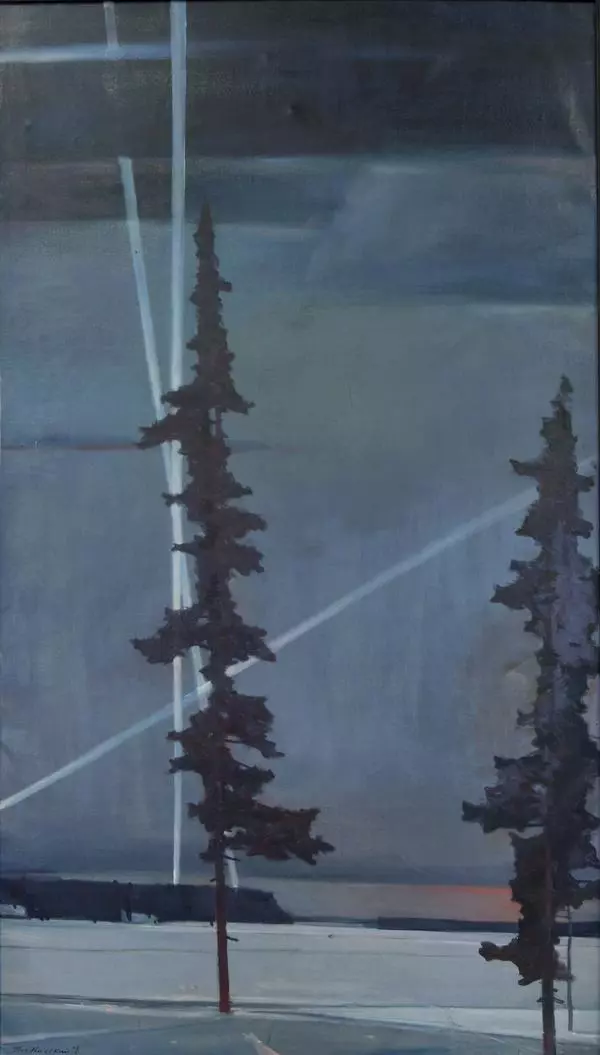The painting ‘Airdrome’ was created by Georgy Nissky — one of the most famous Soviet industrial landscape painters. Industrial landscapes served to demonstrate the technical achievements of the 20th century, such as the latest examples of architecture, transport networks, or factory sites. This large-scale painting is an attempt to render the rhythm and atmosphere of an airport.
Nissky had firsthand knowledge about airplanes, and they can be found in more than just one of his paintings. The painter was an energetic, restless traveler and adventurer, who jumped with a parachute and had the experience of flying on military aircraft. During the Great Patriotic War, he took sketches of the Soviet Air Forces equipment. Apart from airplanes, Nissky’s paintings also feature big ships, highway strips, and railway lines.
Georgy Nissky’s artwork is often paralleled with that of Edward Hopper. Both artists chose deserted industrial landscapes as their subject matter. However, Nissky strove to make his paintings livelier: he depicted habitable spaces, although people were absent in most of them. Nadezhda Stepanova, the curator of the exhibition at the Institute of Russian Realist Art, mentioned this comparison while giving an interview to the Russian newspaper ‘Kultura’:
Nissky had firsthand knowledge about airplanes, and they can be found in more than just one of his paintings. The painter was an energetic, restless traveler and adventurer, who jumped with a parachute and had the experience of flying on military aircraft. During the Great Patriotic War, he took sketches of the Soviet Air Forces equipment. Apart from airplanes, Nissky’s paintings also feature big ships, highway strips, and railway lines.
Georgy Nissky’s artwork is often paralleled with that of Edward Hopper. Both artists chose deserted industrial landscapes as their subject matter. However, Nissky strove to make his paintings livelier: he depicted habitable spaces, although people were absent in most of them. Nadezhda Stepanova, the curator of the exhibition at the Institute of Russian Realist Art, mentioned this comparison while giving an interview to the Russian newspaper ‘Kultura’:


